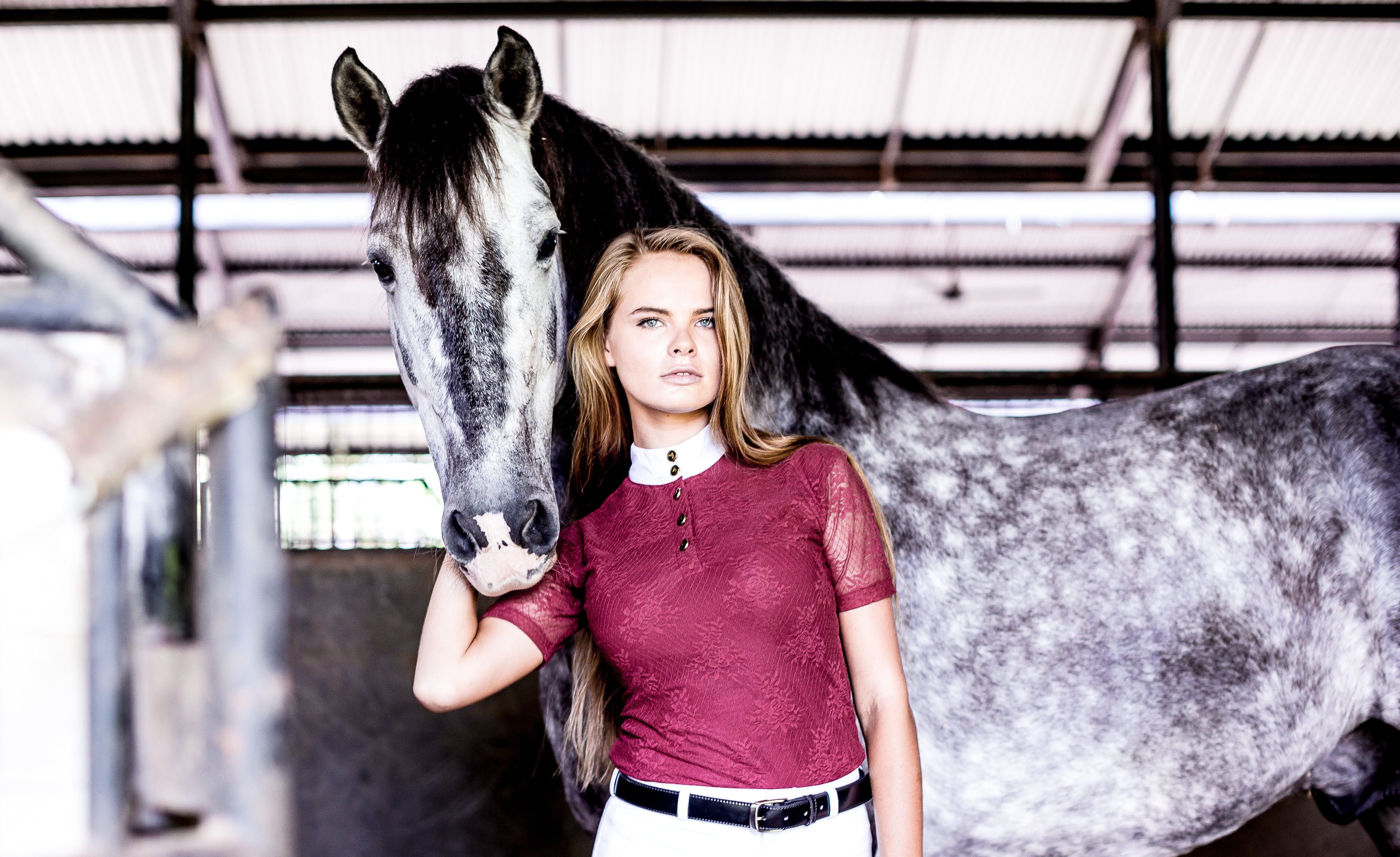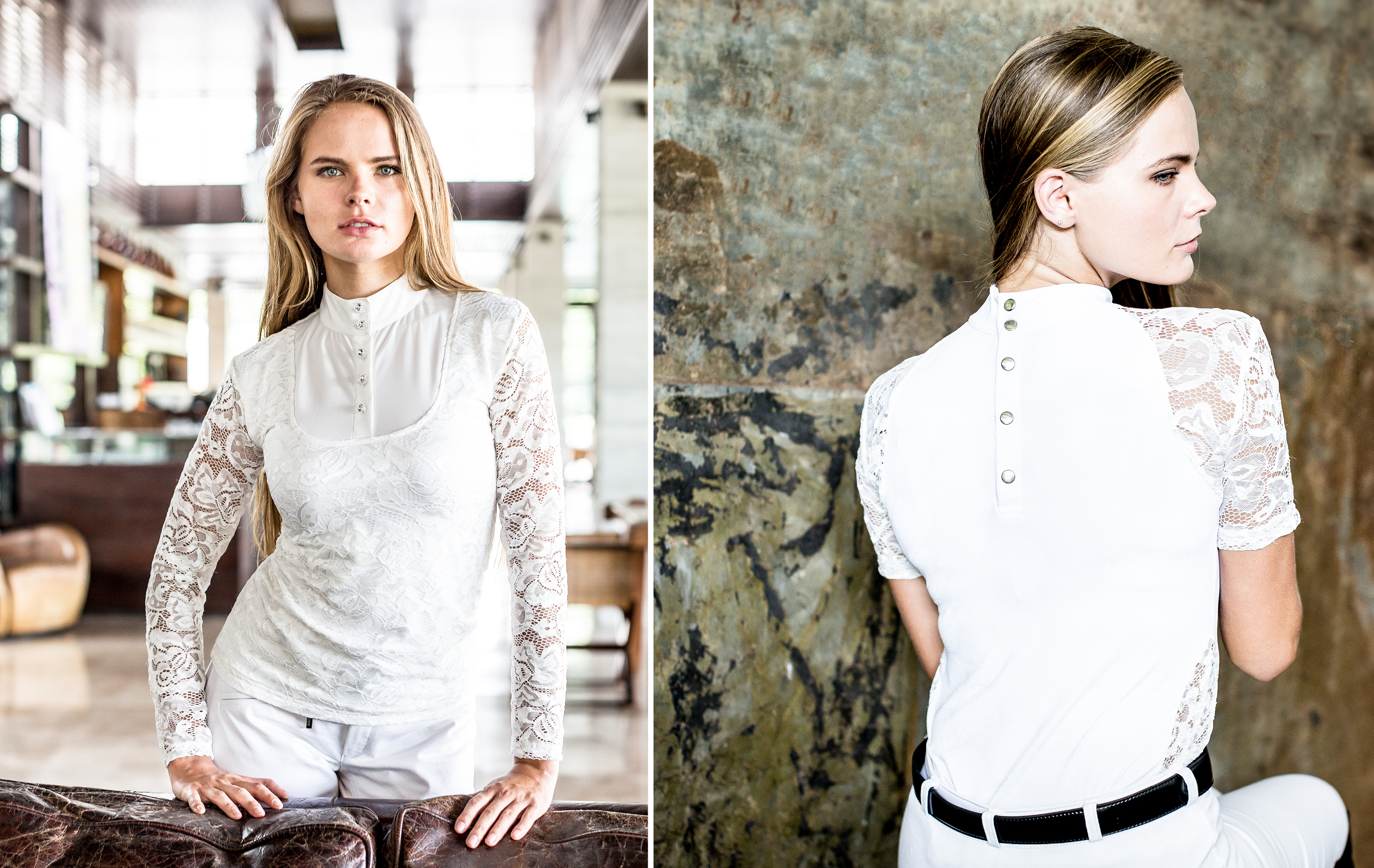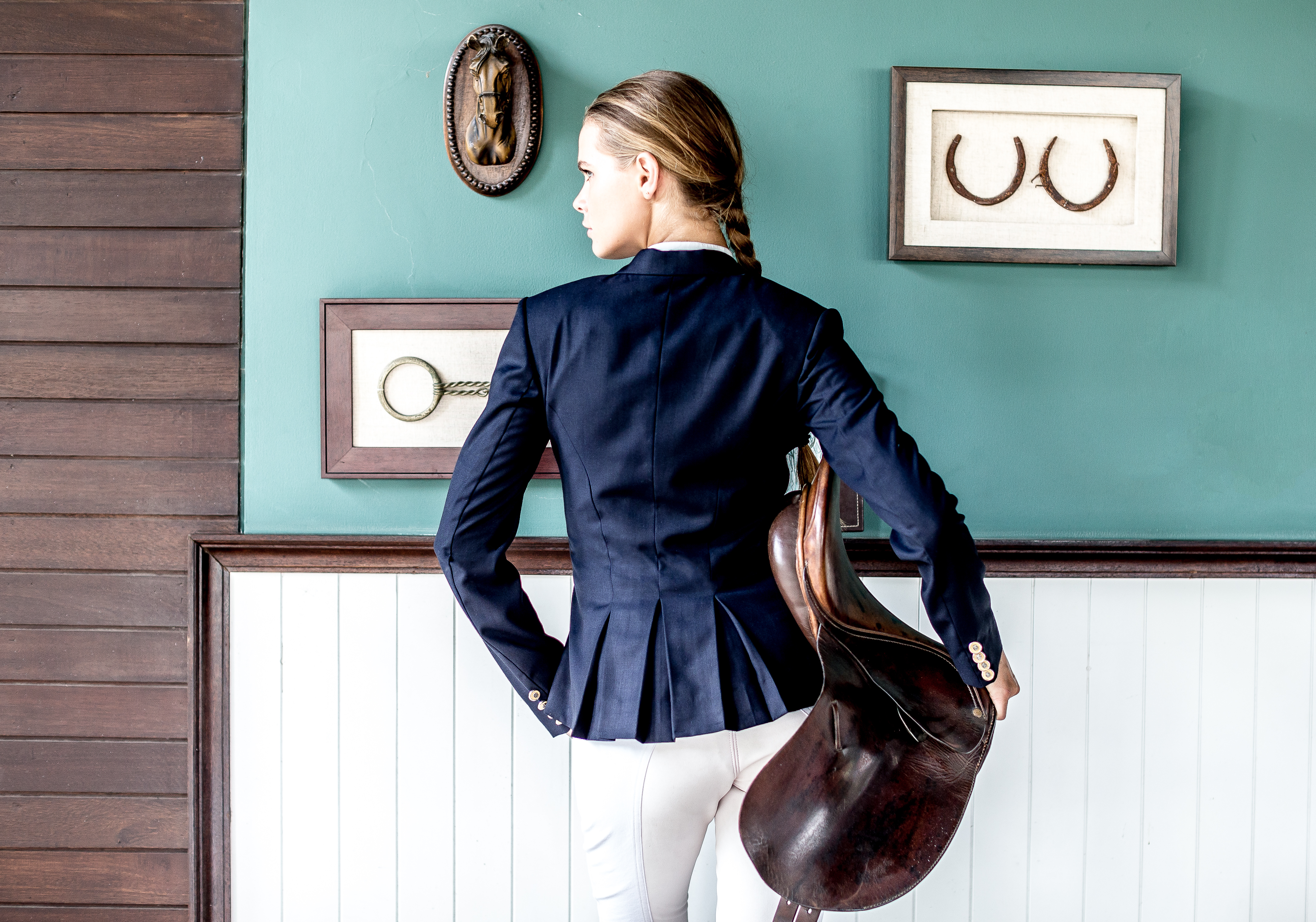This equestrian apparel company finds harmony between cruelty-free textiles and timeless designs.
Secure your bridle and saddle up for a voyage to Australia, where showmanship does not stop at the horse. Since the country’s 1956 Summer Olympics debut, Aussie riders have not only perfected the movements of classical dressage; they have shaped the future of riding apparel as well.
As a competitive rider for 15 years, Melita Harmer trusts attire that exhibits both functionality and grace. Harmer is the owner of Valentine Equine, which she calls the “fabric finder to the mailman and everything in between.” Her designs nod to the quintessential equine styles of the past while in pursuit of the eco-friendly fashions of the future.
 The first inklings of Harmer’s affection for equine design surfaced during family holidays in Asia, when she amassed new show outfits to add to her versatile wardrobe. Following the injury and subsequent retirement of Harmer’s dressage horse, she spent time in Bali, Indonesia. It’s there where Harmer put her college minor in textiles and clothing to use, collaborating with tailors to create designs that would later be sold on Facebook.
The first inklings of Harmer’s affection for equine design surfaced during family holidays in Asia, when she amassed new show outfits to add to her versatile wardrobe. Following the injury and subsequent retirement of Harmer’s dressage horse, she spent time in Bali, Indonesia. It’s there where Harmer put her college minor in textiles and clothing to use, collaborating with tailors to create designs that would later be sold on Facebook.
Over the next five years, Valentine Equine would rise up the ranks as one of the world’s most luxurious brands for those on and off the horse.
The whole reason I started making shirts was purely for the function. I was riding and teaching in around 90 degrees with 80 percent humidity in four-hour shifts. I wanted to be comfortable, stay cool, and look presentable to clients.
 Valentine Equine’s specialty is in the details. Its bibs feature bright binding and rows of crystals, while nine jacket options offer a variety of textures and styles, ranging from a double back split to front pleats, and are available in materials such as luxe velvet, quick-dry air mesh, and shower-proof stretch fabric. These designs, composed of malleable and long-lasting textiles, are both stunning and useful in the riding arena.
Valentine Equine’s specialty is in the details. Its bibs feature bright binding and rows of crystals, while nine jacket options offer a variety of textures and styles, ranging from a double back split to front pleats, and are available in materials such as luxe velvet, quick-dry air mesh, and shower-proof stretch fabric. These designs, composed of malleable and long-lasting textiles, are both stunning and useful in the riding arena.
Valentine Equine also sets itself apart in another way, with its humane use of textiles and its plastic-free packaging. The company uses no animal products and employs as many eco-friendly textiles as possible, with more coming available each year. For example, in lieu of leather collars on hunter jackets, Valentine Equine instead uses fabric or eco-leather composed of recycled materials.
 “It’s not just the environmental impacts of factory farming or the welfare issues for the animals,” Harmer says. “The chemicals used in treating leather are problematic for the environment and the people having to undertake the processes.”While some argue Valentine Equine’s cruelty-free status is restrictive, the brand sees it as an opportunity to be more creative and, as a result, distinguish itself from other companies.
“It’s not just the environmental impacts of factory farming or the welfare issues for the animals,” Harmer says. “The chemicals used in treating leather are problematic for the environment and the people having to undertake the processes.”While some argue Valentine Equine’s cruelty-free status is restrictive, the brand sees it as an opportunity to be more creative and, as a result, distinguish itself from other companies.
For instance, Valentine Equine recently incorporated fabric made of 78 percent ECONYL, which is a 100 percent post-consumer waste polyamide yarn. This flat, soft, and stretchy fabric resists oils and provides muscle support.
 In tandem with quality textiles is a quality fit, crucial elements in competitive performance. “Wearing something fitted while you ride makes you more aware of your position,” and better able to make adjustments, Harmer says. That’s one reason why four-star rider Colleen Rutledge and Australian Olympic gold medalist Sonja Johnson find Valentine Equine’s bespoke offerings particularly enticing.
In tandem with quality textiles is a quality fit, crucial elements in competitive performance. “Wearing something fitted while you ride makes you more aware of your position,” and better able to make adjustments, Harmer says. That’s one reason why four-star rider Colleen Rutledge and Australian Olympic gold medalist Sonja Johnson find Valentine Equine’s bespoke offerings particularly enticing.
From custom-colored accoutrements like pinneys to custom-fit mainstays like the Shadbelly Tailcoat or Aila Shirt, Valentine Equine’s tailored pieces are characterized by confident designs and specialized details. The only step left is for the rider to stride into the winner’s circle.
Featured in the Summer 2018 issue of C&I's sister publication, Western & English Today.
PHOTOGRAPHY: courtesy Valentine Equine














